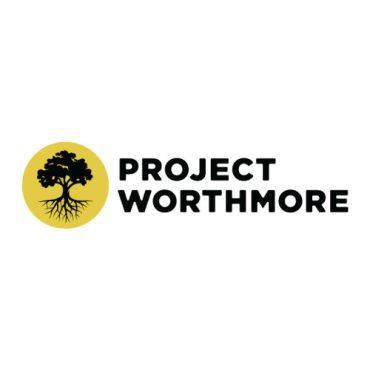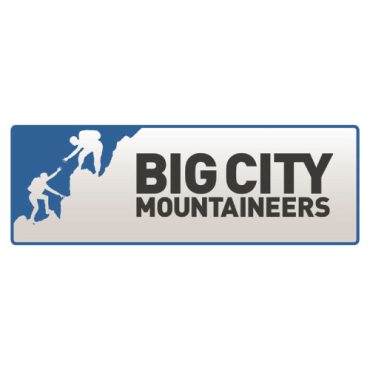The Rocky Mountain Greenway Project is a plan to create a regional trail system connecting Rocky Flats, Rocky Mountain Arsenal, and Two Ponds with Rocky Mountain National Park.
Last Thursday, the Boulder County Commissioners met to discuss the Project. The Rocky Mountain Peace and Justice Center put out calls to action ahead of the event, asking Boulder residents to help urge the county to withdraw their participation in the project.
Three community members leading efforts to halt the project joined KGNU’s Jackie Sedley for today’s Morning Magazine.
Jon Lipsky is a former FBI agent who led the raid on Rocky Flats, that shut down the site in 1989. Dr. Michael Ketterer is a scientist and a leading expert on plutonium, who has studied plutonium contamination at Rocky Flats. And Giselle Herzfeld is the nuclear guardianship campaign coordinator with the Rocky Mountain Peace and Justice Center.
Listen:
-
 play_arrow
play_arrow
Untitled Jackie Sedley
Transcript:
Jackie Sedley: You’re listening to the Morning Magazine. I’m Jackie Sedley. Last Thursday, the Boulder County Commissioners met to discuss the Rocky Mountain Greenway Project, which aims to connect Rocky Flats and other public lands with Rocky Mountain National Park through a regional trail system.
The Rocky Mountain Peace and Justice Center put out calls to action ahead of the event, asking Boulder residents to help urge the county to withdraw their participation in the project. We have community members with us this morning leading efforts to halt that project.
Jon Lipsky is a former FBI agent who led the raid on Rocky Flats that shut down the site in 1989. John, good morning.
Jon Lipsky: Good morning. Good morning, listeners.
Sedley: We also have Dr. Michael Ketterer, a scientist and leading expert on plutonium, who has studied plutonium contamination at Rocky Flats. Good morning.
Dr. Michael Ketterer: Good morning, everybody.
Sedley: And we have Giselle Herzfeld, the nuclear guardianship campaign coordinator with the Rocky Mountain Peace and Justice Center. Good morning, Giselle.
Giselle Herzfeld: Good morning.
Sedley: So, thank you all for being here. I think it’d be helpful to start with a very brief overview of the history of Rocky Flats for those who are newer to the area or unaware of the context here. Jon, do you want to jump in with a bit of that background? Thank you, Jackie.
Lipsky: Yes, Rocky Flats started making the plutonium trigger for the atomic bomb in 1951. And with our raid in 1989, it stopped the manufacture of those bombs, and it turned into a Superfund site. There was an incomplete cleanup, under budget and it turned into now a, mostly a refuge. But it’s still, in the middle, there’s a Superfund site. And Fish and Wildlife Service is the administrator of this refuge, and they came up with the idea of connecting Rocky Flats with the Rocky Mountain Arsenal, Two Ponds, all the way up to Rocky Mountain National Park with a Greenway Project that we oppose.
Sedley: Talking a bit more about the land there, Michael, you study plutonium. In layperson’s terms, can you provide some insight into, to what extent to just how hazardous the land on and around Rocky Flats is, even though the site was shut down over 30 years ago.
Ketterer: Well, plutonium is a well known synthetic, radioactive, and chemically toxic element. And there’s plutonium found everywhere on the Earth’s surface, but at Rocky Flats, we’ve got kind of a concentrated place a plume of elevated plutonium in soils, in the surface soils right near Rocky Flats. And it doesn’t go away. It persists there until it decays by radioactive decay in thousands of years, and it can blow around and move around. So there’s contaminated soils on the surface. And as John mentioned, there’s also a lot of un-remediated material below the surface, you know, a couple meters down and deeper at the so-called central operating unit where the former plant actually was.
Sedley: Moving now into the Rocky Mountain Greenway project, Giselle – who is leading this project and what exactly are they trying to create?
Herzfeld: So the Rocky Mountain Greenway project is a project to connect citywide trails with the Rocky Mountain Greenway, which is a mountain biking trail that encircles the most contaminated part of the Rocky Flats site. And which is still an EPA Superfund site. And there is an intergovernmental agreement between different cities that surround Rocky Flats to fund this Rocky Mountain Greenway Trail. Currently, there are projects underway, which we are trying to halt. Primarily in Westminster and in Boulder County Westminster is set to build an overpass to connect Westminster Trails to the Rocky Mountain Greenway.
Boulder County is set to build an underpass crossing 120th Street to connect Boulder County Trails to the Rocky Mountain Greenway. And we’re trying to halt those overpasses and underpasses from moving forward because those will dramatically increase the access of the public to that trail system and risk exposing people who are recreating on that site, many of whom do not know about the history of the site. Connecting those people as they recreate to the Rocky Mountain trail system.
Sedley: Yeah, my perspective on Rocky Flats is maybe a bit unique in the sense that I only moved here to Colorado nine months ago. And so despite the work I’ve done reporting on climate and environment, I’d never heard about the extent.
of the damage and the risk at Rocky Flats until I moved here. So based on conversations that any of you have been a part of related to this trail proposal, how much do you think community members really understand the history of the site and the still present health concerns?
Herzfeld: I can jump in there. So I grew up, I’ve spent my whole life in Boulder County grew up my whole youth less than 20 minutes from the Rocky Flats site, and I, like you, I, my family was very environmentally aware always showing up to city council meetings to talk about fracking and local environmental issues, and yet Rocky Flats was never a household name. It was not something that we were familiar with. My parents moved here from California in the late 90s, and by that point, even, it was already starting to become not a household name, so it took me 21 years before I even heard the name Rocky Flats for the first time, which shocked me because I had always grown up around there, and I asked my friends who had grown up in the area.
They hadn’t heard about it either, so It’s very shocking to me and was very shocking to me to realize that young people really do not know about the history of this site and people moving in here into the front range from out of town also do not very often know about the history of the site.
Lipsky: In 1989, the EPA designated Rocky Flats as a Superfund site on the National Priorities List. The half life of memory has been forgotten that 25, 000 acres. Comprise the Superfund site. Over 20,000 acres was delisted in 2007. None of it was cleaned up. The only cleanup occurred in the 1300 acre site of the central Operable unit. And now we have the US Fish and Wildlife Service and the Federal Highway Authority constructing the Greenway Project. And their reliance on the Energy department’s expertise in plutonium should not be misconstrued with the energy department’s fringe management of their own nuclear waste. at the Rocky Flats crime scene. And what I’m trying to say is, DOE is not an expert on their waste. They’ve been litigated up and down, all of their regulations, and they, and they lose. And the big loser are the public. Because now we’re being forced to live with plutonium contamination and other Rocky Flats waste.
Ketterer: I think there’s a couple of major issues that we should be concerned about with the soil on the refuge and, of course, on the central operating unit. But the more that we have people go on that property and travel on it by foot, by plane. Bike or horse, whatever. The more we are going to entrain and move around, entrain that soil into the air and it, it will move around and will be transported into the winds. As we saw here, everybody who was in town last Saturday and Sunday remembers what the wind was like. Under conditions like that, if there’s people that are traipsing around on the refuge, they’re gonna be disturbing those soil crusts and creating the opportunity for that soil to get entrained into the air like we had on the winds of April 6th.
Sedley: So as I mentioned at the top, the Boulder County commissioners met last week to discuss the project. What is the county’s current relationship to the project and were there any important outcomes from that meeting?
Lipsky: Boulder County is a signatory to the project itself. They signed on with other municipalities in 2016. And the town of Superior did not even consider it, or they, or I should say they considered it, but they, they wanted the, the greenway to go around Rocky Flats, not through it. Now, Boulder County may have requested and demanded, Sampling and analysis of the improvements for the trails on Rocky Flats before they would allow this underpass on 128.
Listeners need to understand that Rock Creek was polluted by Rocky Flats operations. It’s not. A lot of pollution, but there is much there. And the final thing I’ll quickly say is, Rocky Flats Superfund site remedy is not working. In 2022, the EPA agreed with DOE that PFAS, the presence of PFAS, has deferred their protectiveness. So can you imagine a hiker grabbing some Rock Creek water and consuming it with PFAS? It’s a viable possibility.
Sedley: And, I’m curious if there were any important outcomes from that meeting, and specifically, I guess, toward you Giselle the Rocky Mountain Peace and Justice Center is asking the county to withdraw their participation. Have there been any conversations with county commissioners that make that seem like a potential likelihood?
Herzfeld: So there is a precedent for the Boulder County Commissioners opposing public recreation on Rocky Flats. So I do think we have some, some good momentum building. On January 30th, Boulder County Commissioners actually voted to oppose public recreation on Rocky Flats, which sets a solid precedent for what we hope ultimately will will lead to them withdrawing their participation in this intergovernmental agreement following the precedent of governments like Superior and Broomfield and ultimately withdraw from the project. Conversations are still underway. The, the meeting was still very recent. But we hope that with more conversations and with more public advocacy and with this really incredible precedent that Boulder County has set with this January 30th vote we hope that Boulder County will ultimately withdraw from the project.
Sedley: And with just about 30 seconds left here, I’m wondering, do you all expect the project to come to fruition the way it’s planned? That might be too big of a question to answer, but does it seem like there is a lot of momentum against having these trails go through Rocky Flats at this moment?
Lipsky: I’m not feeling very comfortable about the chances of the Greenway going through because I think Westminster and now Boulder County can withdraw in the flat grant will die and also Peace and Justice Center, along with Physicians for Social Responsibility, have a pending court case in Washington, D.C. for reconsideration of their final, the Federal Highway Authority, to make a decision to go ahead and go forward. And it was incomplete, it’s an incomplete decision.
Sedley: All right. Well, Jon Lipsky, Dr. Michael Ketterer, and Giselle Herzfeld, thank you so much for joining me this morning. I appreciate you being here.
All: Thanks very much.

















